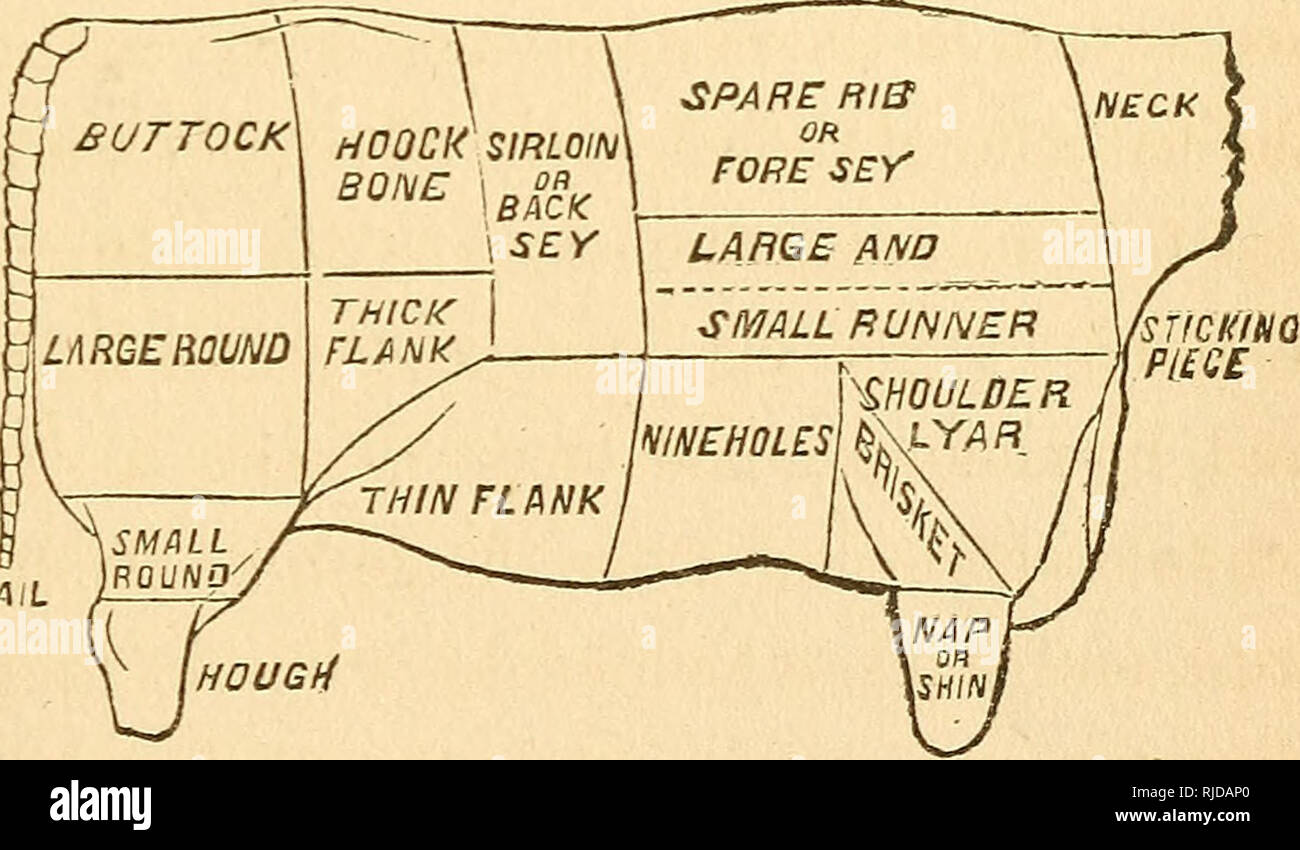. Cattle and their diseases. Cattle. DRIVING AND SLAUGHTERING. 105 ing—which they should, as nearly as possible—their natural appearance. In cutting up a carcass of beef the London butcher displays great expertness; he not only discriminates between the qualities of its different parts, but can cut out any piece to gratify the taste of his customers. In this way he makes the best use of the carcass and realizes the largest value for it, while he gratifies the taste of every grade of customers. A figure of the Scotch and English modes of cutting up a carcass of beef will at once show the differ

Image details
Contributor:
Library Book Collection / Alamy Stock PhotoImage ID:
RJDAP0File size:
7.1 MB (288.7 KB Compressed download)Releases:
Model - no | Property - noDo I need a release?Dimensions:
2067 x 1209 px | 35 x 20.5 cm | 13.8 x 8.1 inches | 150dpiMore information:
This image is a public domain image, which means either that copyright has expired in the image or the copyright holder has waived their copyright. Alamy charges you a fee for access to the high resolution copy of the image.
This image could have imperfections as it’s either historical or reportage.
. Cattle and their diseases. Cattle. DRIVING AND SLAUGHTERING. 105 ing—which they should, as nearly as possible—their natural appearance. In cutting up a carcass of beef the London butcher displays great expertness; he not only discriminates between the qualities of its different parts, but can cut out any piece to gratify the taste of his customers. In this way he makes the best use of the carcass and realizes the largest value for it, while he gratifies the taste of every grade of customers. A figure of the Scotch and English modes of cutting up a carcass of beef will at once show the difference ; and upon being informed where the valuable pieces lie, an opinion can be formed as to whether the oxen the farmer is breeding or feeding possess the properties which will enable him to demand the highest price for them. The sirloin is the principal roasting-piece, making a very handsome dish, and is a universal favorite. It consists of two portions, the Scotch and English sides; the former is ibove the lum- oar bones, and somewhat lard in ill-fed iattle; the latter consists of the muscles under these bones, which are generally covered with fine fat, and are exceedingly tender. The )etter the beast is fed, the larger is the under muscle, better :overed with fat, and more tender to eat. The hook-bone nd the buttock are cut up for steaks, beef-steak pie, or. SCOTCH MODE OF CUTTING VP BEEF.. Please note that these images are extracted from scanned page images that may have been digitally enhanced for readability - coloration and appearance of these illustrations may not perfectly resemble the original work.. Jennings, Robert, 1824-1893. Philadelphia, J. E. Potter;